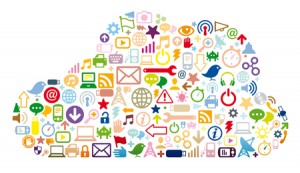 The Internet now touches all aspects of our lives, because it links the various devices, from smartphones and tablets to systems that are used in areas such as public and personal security, surveillance, navigation, health, comfort and leisure.
The Internet now touches all aspects of our lives, because it links the various devices, from smartphones and tablets to systems that are used in areas such as public and personal security, surveillance, navigation, health, comfort and leisure.
The ARM microprocessor has come a long way in the processing integrated techniques. But the future is even more promising, as the Internet of Things begins to reveal its true potential. Intelligent devices connected to the Internet, which are expected to reach 15 billion units by 2015, tripled from 2 billion in 2010, will represent an important pillar for the Internet of Things (IoT).
ARM’s recent The Economist report from the Economist Intelligence Unit reveals that the IoT is finally here and quietly gaining space. After surveying 779 senior business leaders from 19 different industries, the Economist report revealed that more than 75 percent of enterprises are already exploring Internet of Things. In fact, more than 94 percent believe IoT will have a significant impact in the next three years and only six percent think it is only a hype.
The report says that over the next few years the IoT is expected to have the biggest impact on customer service and products and services. Current activity should mean that a strong pipeline of IoT-based products and services will soon begin reaching the market. [As such], businesses should be prepared for an explosion of IoT-generated data. Fitting sensors and tags to products will generate even more data than are currently being created and captured.
Companies feel confident in their ability to handle this explosion of information, but prior experience of storing and analyzing large amounts of ‘big data’ may lead them to underestimate the additional talent and skills needed to spot new uses and revenue streams emerging from it. Data security and privacy are also likely to grow in significance as more consumers engage with IoT-based products.
The report further says that IoT has finally come of age is the mobile Internet, epitomized by ubiquitous smartphones and tablet devices. The IoT involves devices communicating with each other (machine-to-machine communications, or M2M), but it also involves devices communicating with people and people communicating with devices.
According to IDC, embedded systems are reaching an inflection point after which a new generation of smart devices will break into the market and make it really fascinating futuristic in terms of big data and IoT. IDC defines the intelligent systems as a high-level operating system that connect to the internet and run apps on native cloud-based and have the ability to process their data. Analysts predict that by 2016, these smart systems will count for a third of the market for embedded processors, affecting more than two thirds of its turnover, surpassing the growth of PCs and smartphones.
ARM’s development platform specifically geared toward the Internet of Things. The ARM based processors run on smartphones and tablets have a market share of 71 percent in 2011. ARM innovations like the minuscule Freescale Kinetis KL02 would be the next evolution of connected devices.